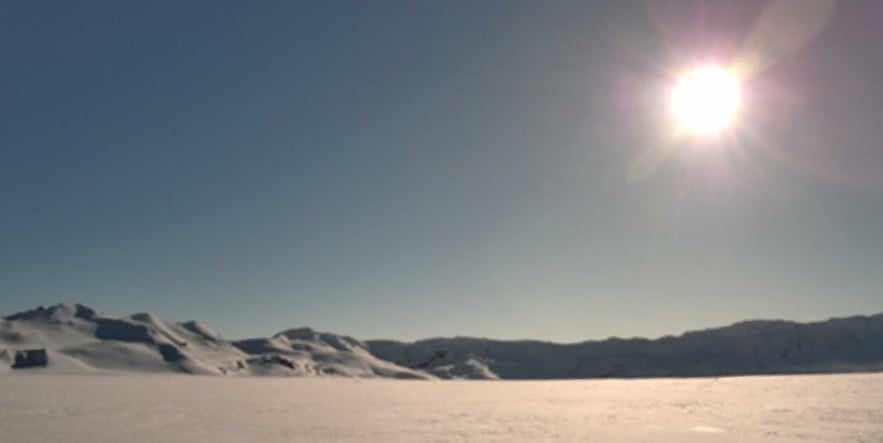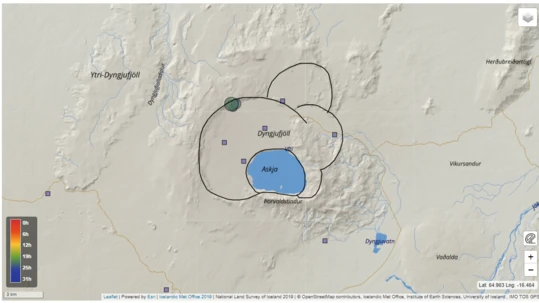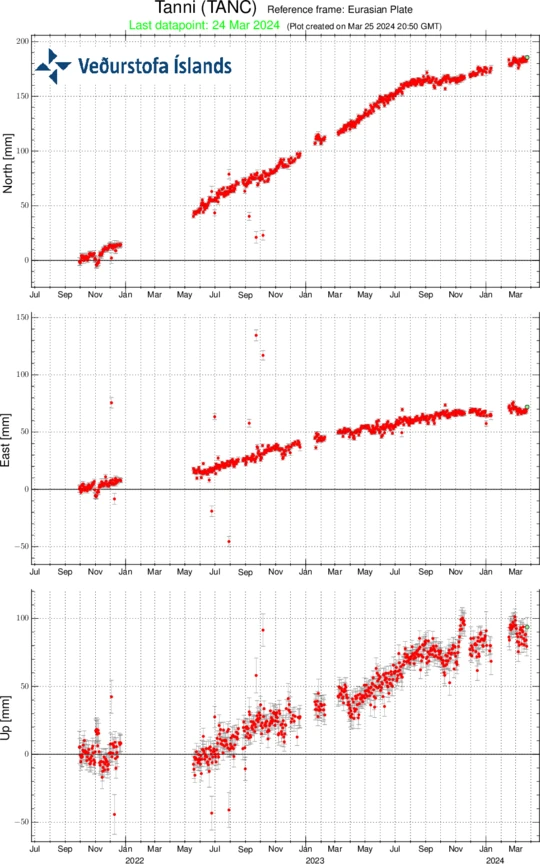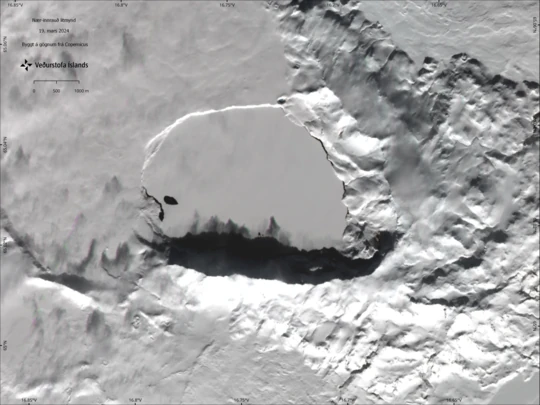Earthquake swarm in Askja caldera, ground deformation continues, Iceland

A seismic swarm occurred in the northwestern part of the Askja caldera in Iceland on March 25, 2024.
The Icelandic Met Office (IMO) detected about 30 earthquakes in the swarm between 08:00 and 12:00 UTC. The largest was M3.5 at a depth of 5 km (3.1 miles).
Three earthquakes with magnitudes between M2 and M2.5 were also detected, while the rest of the activity was characterized by smaller events.
Overall, the seismic activity in Askja has been quite stable between months and unchanged until March 25. “Looking back, we can see that earthquakes with magnitude above M3 were detected in January 2022 and October 2021,” IMO said.

Deformation at Askja continued with a stable rate for two years since the end of summer 2021. Last autumn, the GNSS data indicated decreased deformation rates but the most recent ground deformation measurements based on GNSS data suggest that the rate has increased again, even though it remains at lower rates as observed prior to the autumn in 2023.

Additional data, which will be collected in the next few days, will help in clarifying and confirming the trend of the deformation process in the area, IMO said.
A satellite image acquired on March 19 shows a typical winter view of Askja Lake, where most of the lake is covered by ice except for those two well-known areas characterized by persistent geothermal activity. In February last year, Askja Lake was ice-free and considered unusual for that time of year.

The last eruptive period at this volcano lasted from October to December 1961 (VEI 2).
Askja is a large basaltic central volcano that forms the Dyngjufjöll massif. It is truncated by three overlapping calderas, the largest of which is 8 km (5 miles) wide and may have been produced primarily from subglacial ring-fracture eruptions rather than by subsidence.
A major explosive eruption (VEI 5) took place from January 1 to October 17, 1875, and entered history as one of Iceland’s largest eruptions. This eruption resulted in the formation of a smaller 4.5 km (2.8 miles) wide caldera, now filled by Öskjuvatn Lake, that truncates the rim of the larger central caldera.
A major rhyolitic explosive eruption from Dyngjufjöll about 10 000 years ago was in part associated with the formation of Askja caldera. Many postglacial eruptions also occurred along the ring-fracture.
The 100 km (62 miles) long Askja fissure swarm, which includes the Sveinagja graben, is also related to the Askja volcanic system, as are several small shield volcanoes such as Kollatadyngja.
Twentieth-century eruptions have produced lava flows from vents located mostly near Öskjuvatn lake.
References:
1 Seismic swarm in the northwest part of the caldera in Askja yesterday – IMO – March 26, 2024
2 Askja – Geological summary – GVP
Featured image credit: IMO

Why is information about Askja being displayed – with no other information – in the article
— New volcanic eruption begins on Reykjanes Peninsula, Iceland —
– Saturday, March 16, 2024 – Updated on Thursday, March 28, 2024 04:57 UTC –
With my apologies – The first sentence of my first comment should be –
.
Why is information about this inactive Volcano ‘Askja’ being displayed – with no explanation about the data – in the other article
— New volcanic eruption begins on Reykjanes Peninsula, Iceland —
– Saturday, March 16, 2024 – Updated on Thursday, March 28, 2024 04:57 UTC –
.
Nick